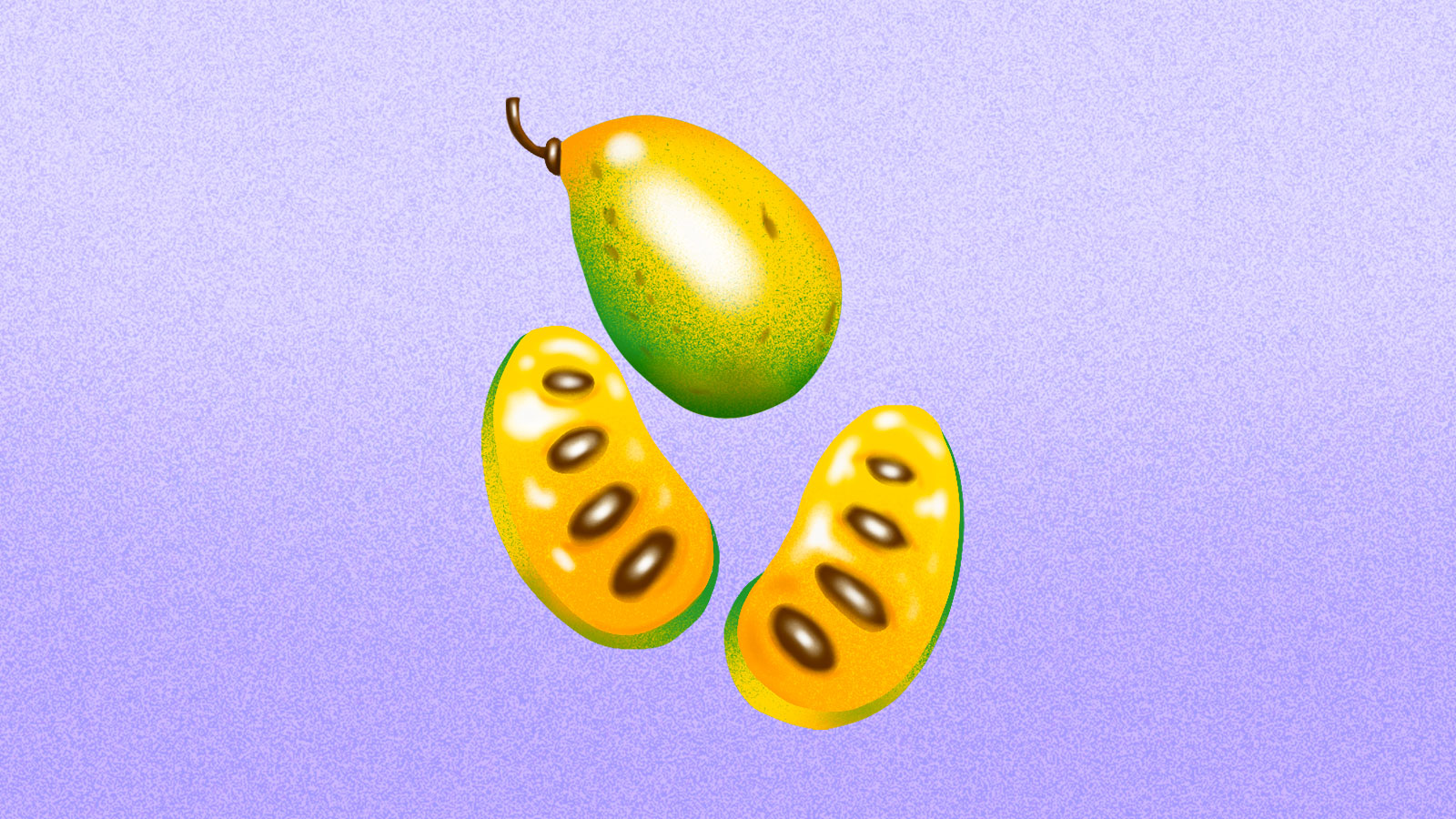As our climate changes, so will our diets. Fix’s Climate Future Cookbook introduces you to foods that show what sustainable, equitable, and resilient eating could look like. Do try this at home.
August 2032
Each year, as the community gardeners tended their plots, the tree at the edge of the lot grew taller. By its fourth summer, it had started to grow clusters of green, oblong fruit. Was it a mango tree, the kids at garden camp wondered? Surely mangoes couldn’t grow this far north.
The days grew golden, the nights came sooner, and the fruits grew larger. On the last day of August, one of the garden leaders sniffed among the leaves of the mystery tree, catching the sweet aroma that meant it was time. She gathered everyone around her.
“This is pawpaw,” she said. “A miracle fruit that looks like mango and tastes like banana. We planted them because they stay happy in warm weather, and we want to be prepared for a changing climate.”
‘I’ve never seen one at the store,” a camper said.
“That’s right. It’s not something you can buy, at least not now. We’re growing it here so that it belongs to all of us.” She picked a perfectly ripe fruit and cut slices for the children. They ate quickly, sticky sweetness coating their fingers.
“Next week, we’re going to make something else you can’t get in the store — a fermented pawpaw hot sauce.”
“A what?” the kids said. The gardener laughed.
“It’ll be different from the kind you’re used to, but I bet you’ll like it. Because it’ll be made from the fruit we pick together.”
Fermented Pawpaw Hot Sauce
Yield: About 1 to 1½ cups
Time: 30 minutes to prepare; between 8 and 20 days to ferment
After cutting the pawpaw, use immediately, or store the pulp in an airtight container and refrigerate or freeze if it will not be incorporated with fermented vegetables within a day. If pawpaw is unavailable in your area, you can substitute mango.
* * *
INGREDIENTS
¾ tablespoon of non-iodized salt (note: iodine has antimicrobial properties that inhibit lacto-fermentation)
1 cup water
1½ cups chopped yellow hot peppers, such as habaneros, scotch bonnets, or any pepper with tropical flavor notes
4 garlic cloves, peeled and crushed
2 sprigs of fresh thyme, about 6 inches long (or other fresh herb of your choice, such as oregano)
1 to 3 pawpaws depending on desired sweetness, peeled and cut with seeds removed
INSTRUCTIONS
- Make the salt brine by mixing salt and water. If using municipal tap water, allow the chlorine to dissipate in an open vessel. Cover with cloth to keep bugs out and let sit, ideally overnight.
- Cut away tops of peppers, slice lengthwise, and scrape out seeds. Place peppers, garlic, and herb sprigs (fully intact) inside a jar. Pour salt brine over top, ensuring vegetables are completely submerged under the brine. Cover with cloth, and secure with a string or rubber band.
- Place jar in a warm (not hot) location away from direct sunlight — the warmer the area, the faster the fermentation process. Check daily for 8 to 10 days in the summer and up to 20 days in the winter. (You want the peppers to wilt; they should be able to bend without breaking.) Scrape away any abnormal bacterial growth from the surface. (Anything that’s other than white can be harmful bacteria. Please keep a close eye and exercise caution with home fermentation!)
- Strain fermented vegetables from the salt brine and strip the herbs from their stems; discard stems. Reserve salt brine.
- Place pawpaw and fermented vegetables in a blender. Taste, adding more brine to achieve desired consistency. If refrigerated in an airtight container the hot sauce will keep for many months.
Recipe courtesy of Jose R. Spellman-Lopez, a Philadelphia-based urban farmer and educator
Try more recipes from Fix’s Climate Future Cookbook:
- Chef Al Massa’s pan-seared lionfish with forbidden rice
- Mushroom quiche with perennial wheat crust
- Insalata caprese with ‘moo-less’ mozzarella



